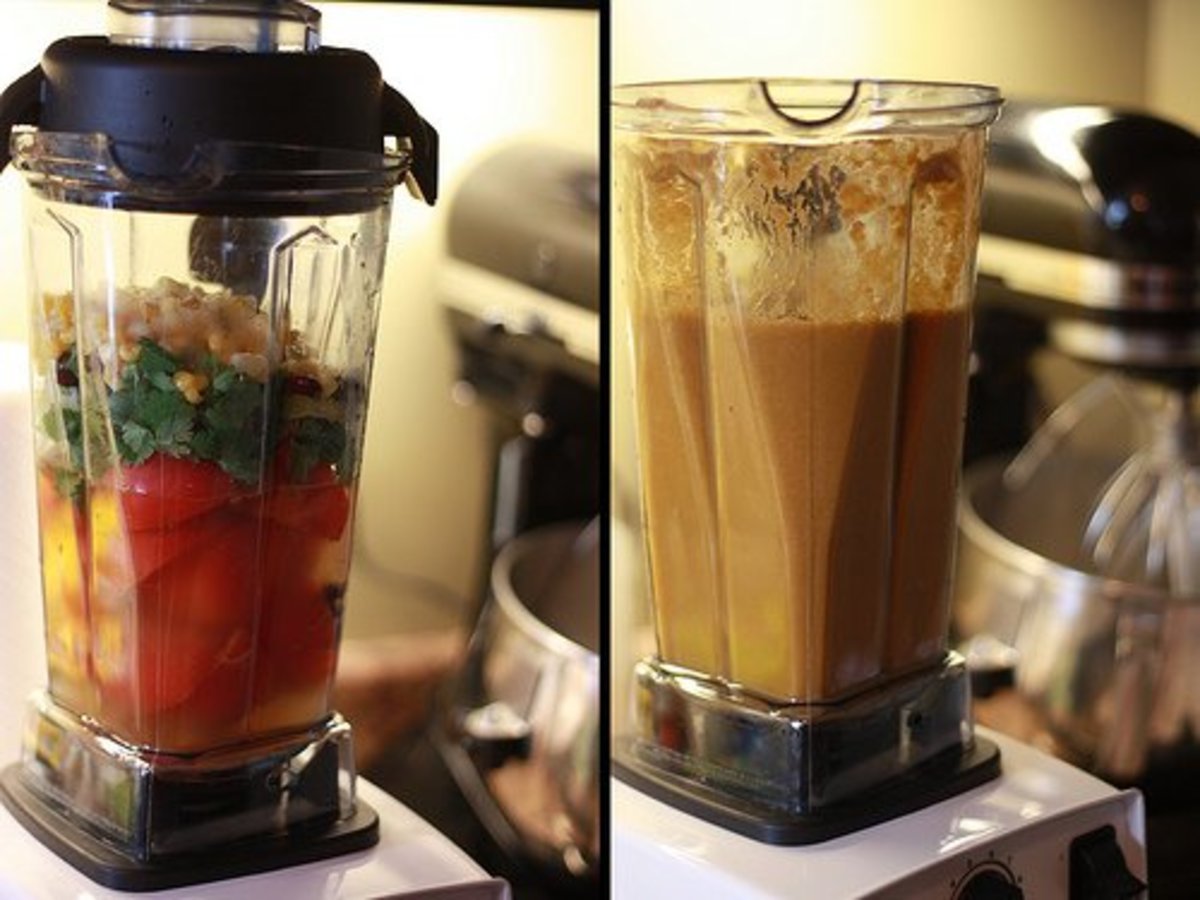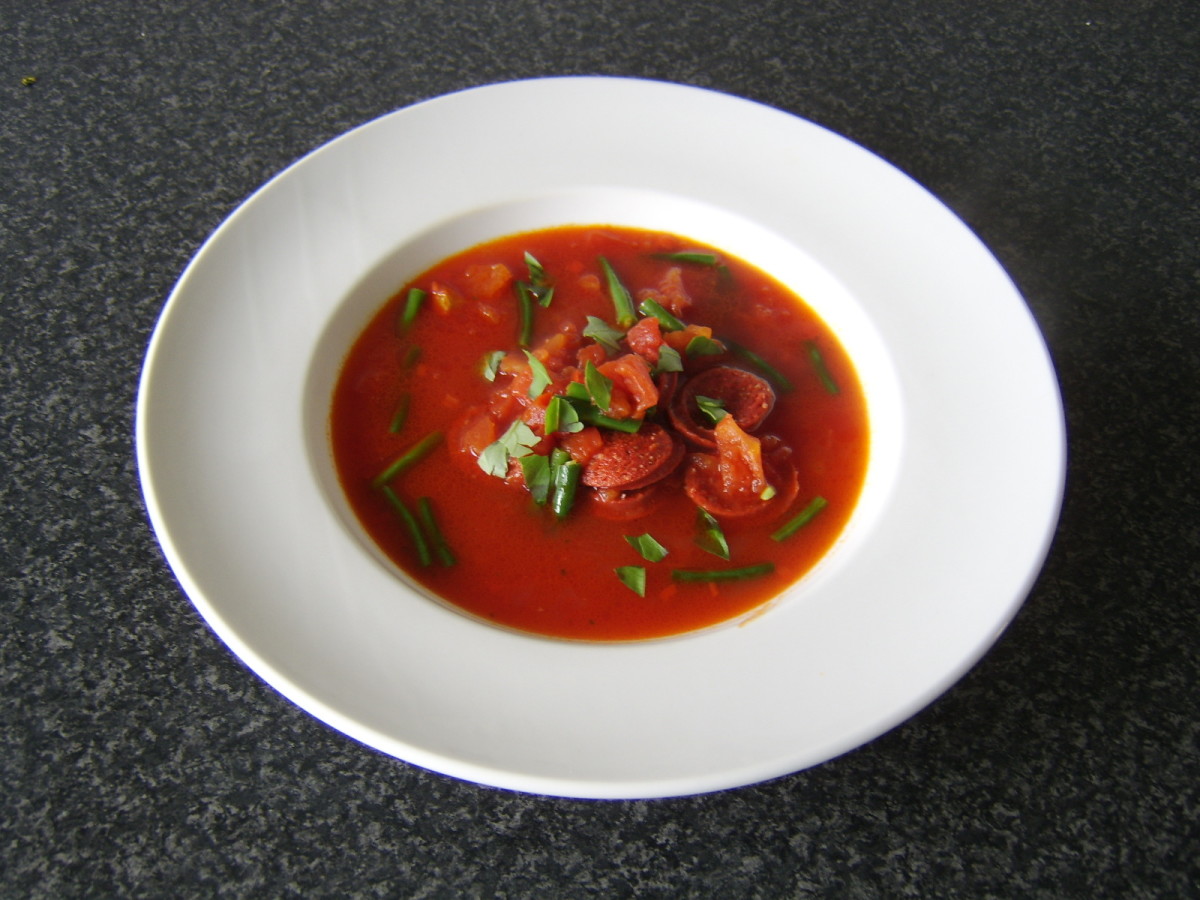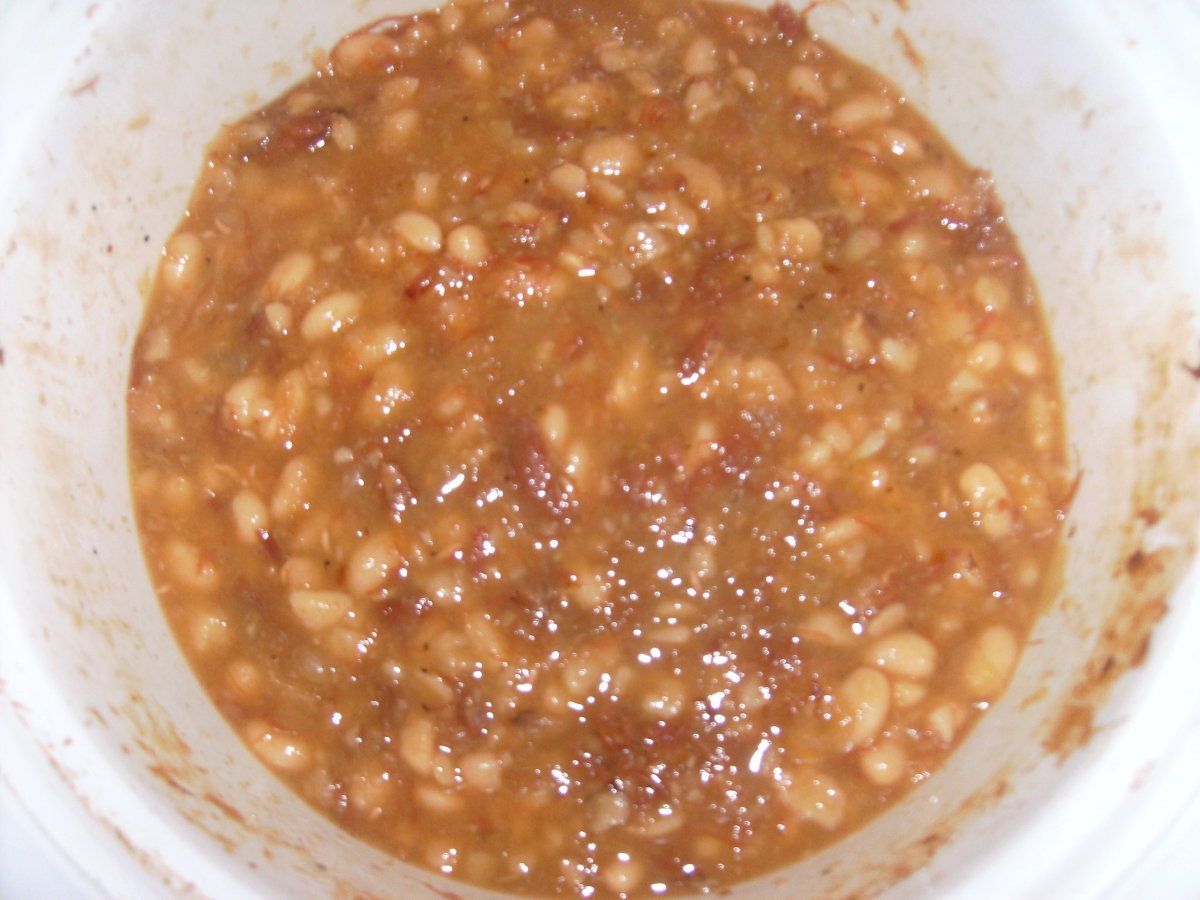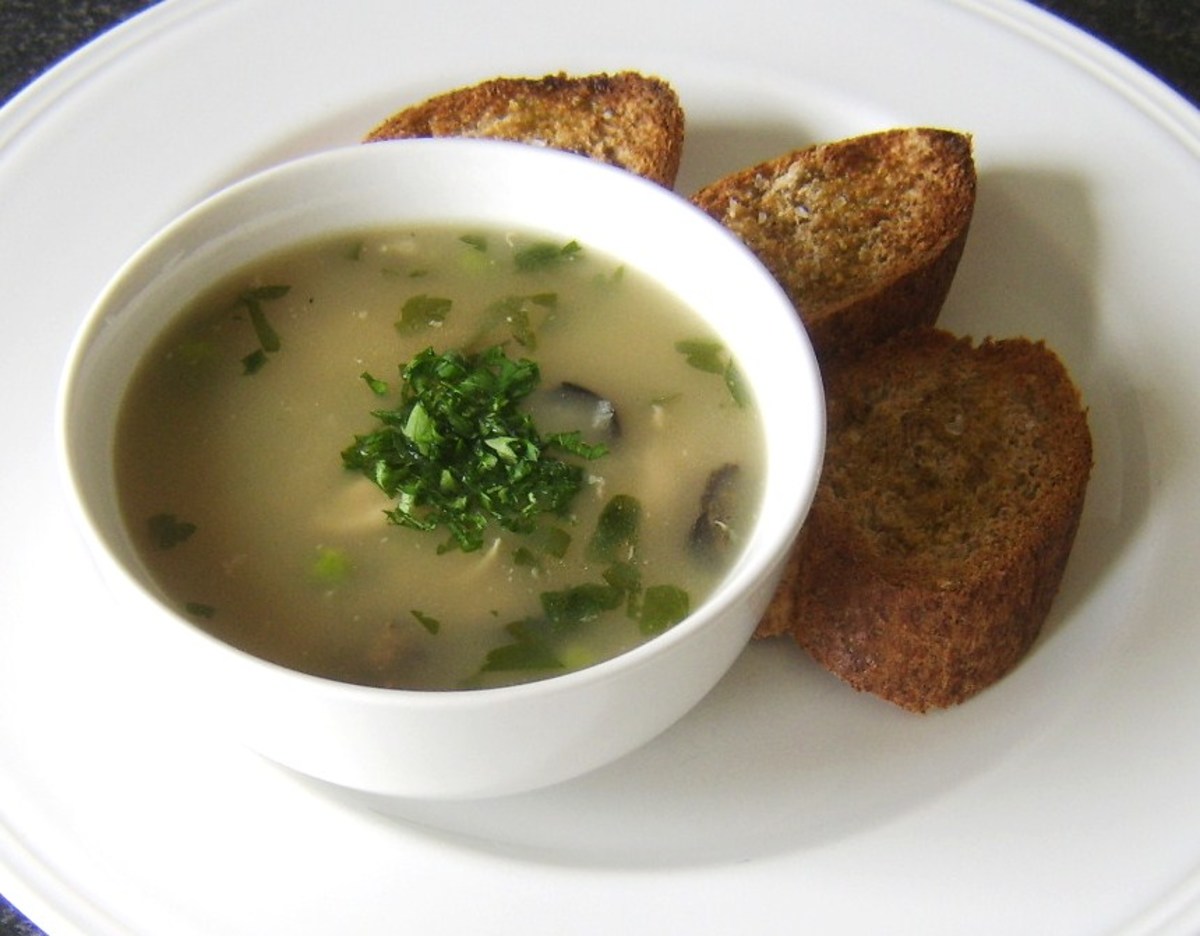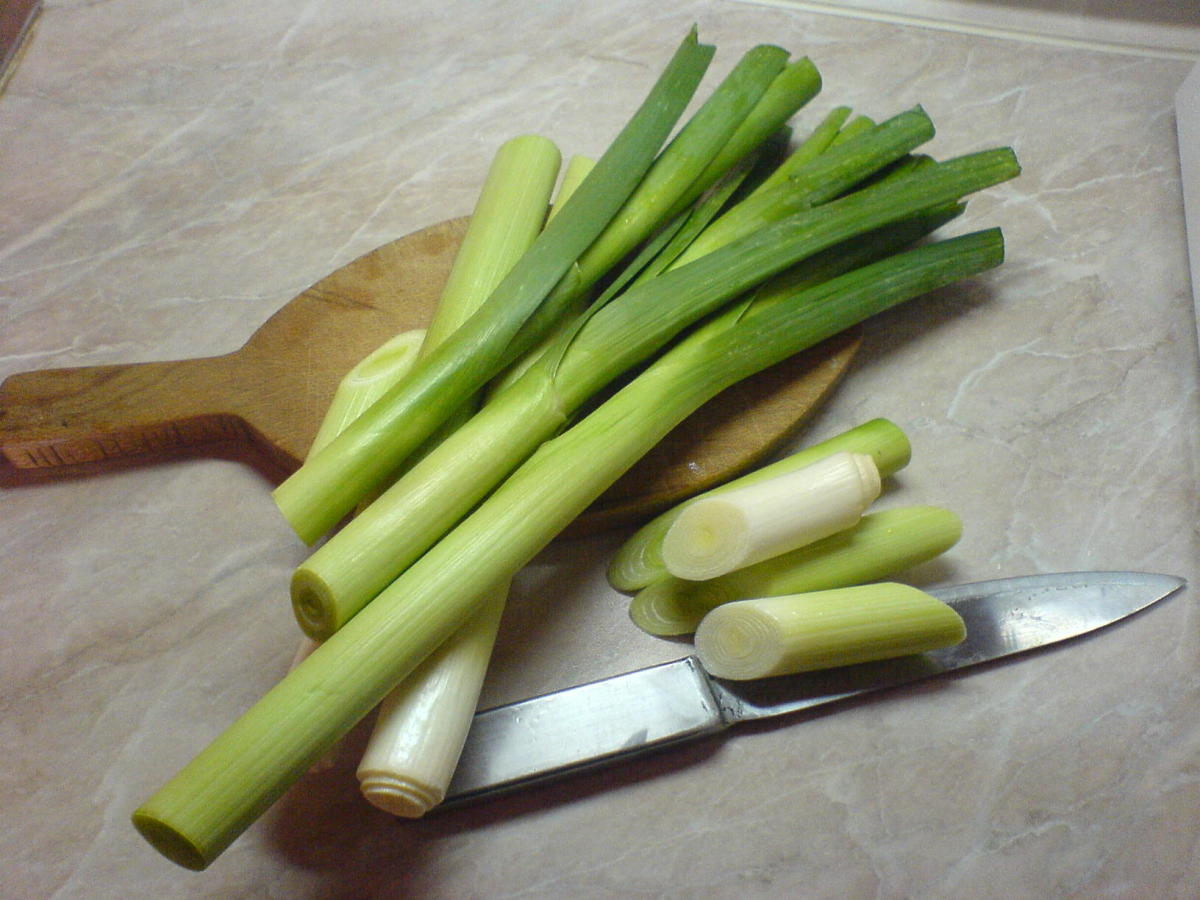Cooking on the Cheap: How to Make Super Soups!
100 Degrees Outside and I'm Making Soup!
Soups are the easiest, cheapest way to stretch your food dollar! But the best soups, by far, are the ones made from leftovers in your fridge. Cooking on the cheap requires a little bit of ingenuity and knowing the basics. If your family is like mine, they don't like leftovers, and I can't stand throwing good food away. Everytime I disguise those leftovers as soup, they are gobbled up. The great thing about most homemade soups is that you can freeze them, pull them out in a few weeks, and everyone thinks you just slaved over a hot stove, just for them.
There are basic ingredients that I use for almost every soup I make, whether it is chicken soup, turkey soup, vegetable beef soup or soup made from pork or ham, certain ingredients are common to all of them. After that, the other ingredients are mixed and matched, depending on what I have hanging around.
If you want to stretch a buck, make it a practice to cook soup once a week. If you don't want to serve it right away, freeze it now and pull it out in November, or whenever those chilly days make you want to warm up your insides.
I am going to give you the basics that I use for practically every soup I make. I am not talking about chowders or stews or even lentil or split pea soup, just my Souper Soups or my John Doe Soups (both titles that I have bestowed upon these mixed-up favorites).
First, I will cover the soup basics for leftover meats; you can't make your own stock with these so you must use store-bought broth or stock. Never buy the kind with additives. Buy the organic no name stock or broth. They are cheaper and better for you. I use low-sodium, only because I like to control my own spice levels.
Second, I will cover the soup basics for fresh meats; if you have fresh meat, you can make your own stock. I have to confess, I am a meat eater, so don't make many vegetable stocks.
The Common Ingredients
- 1 onion, finely diced
- 2 -3 carrots, diced (There was something about those circular shaped slices of carrot that most of my kids hated, but when I cut them up in small, almost square shapes, there weren't any complaints)
- 2 -3 celery stalks, diced, plus some of the leaves from the heart of the celery, chopped up
- 2 large or 4 small tomatoes, finely chopped, best if run through the food processor (scoop up all the liquid and add it, too) or 1 can of diced tomatoes, any size
- 4 cloves of garlic, finely chopped
- 1/2 teaspoon of red pepper flakes
- 1 Tablespoon of salt, if you are making your own broth using fresh meat, or salt to taste if you are using stock in a box for leftover, cooked meats
- 3 Tablespoons of olive oil
- 2 - 4 quarts of liquid, either 3 - 4 quarts of water for homemade broth with uncooked meat or 2 boxes (2 quarts) of stock in a box for leftover cooked meat.
- 1/2 pound to 1 pound of meat, either leftover or fresh, chopped into small, bite-sized pieces. I don't think anyone ever suggests mixing leftover cooked chicken or beef or pork for soup, but if you have a little of each, put it together. It works! When I mix them, I usually use chicken stock with it.
There you go! Everyone has these things on hand and you can use these same ingredients, over and over again as your base. My souper soups never taste the same, though, because the rest of the ingredients that I use are based on what is in the fridge. Next, I will explain how to use them. I will illustrate with the souper soup I made tonight.
Some of the Best Cookbooks for Soup!
Souper Sirloin Soup aka John Doe Sirloin Soup
I looked in the refrigerator and had about 8 ounces of leftover top sirloin. I also had alot of leftover rice that had been cooked in chicken broth, with scallions, mushrooms and diced chile peppers. I noticed that I also had one fresh ear of corn, that hadn't been cooked.
I took out the sirloin, chopped it up and put it into my stock pot (12 quarts, but you can use a smaller size) with the olive oil. I sauteed this over medium heat for about 3 minutes, extracting what beef flavor I could from already cooked meat. I then added the onion, celery, carrots and garlic. I continued to sautee until the vegetables were almost tender and then added the tomatoes and red pepper flakes. The tomatoes affect the color of your broth. I hate a grey, colorless soup and that is what most beginning cooks end up with when trying to make soup. Grey is just not an appetizing color and the addition of tomatoes not only gives an appealing color, but adds vitamins and that little touch of Italian flavor that I grew up with.
I made the choice to use chicken broth, but could have used beef broth for this one. Since I had the rice that was cooked in chicken broth, I figured chicken broth would combine well. After the tomatoes were broken down, I added 2 boxes (each contains one quart) of broth. I brought this to a boil and let it boil gently for about 15 minutes. At this point, I decided that I wanted a thicker broth so I diced up a medium sized russet potato and threw that into the pot, along with the corn. I cut off the kernels and added them to the broth. I also put the cob in, to extract as much corn flavor as I could, and then added about a cup and a half (almost all of it) of the rice, which had the mushrooms, diced chiles and scallions in it. I tasted the broth and added 1 teaspoon of salt. I let the soup continue its slow boil for another 15 minutes. I wanted to make sure the potato had broken down. Indeed, that 15 minutes and I had a thicker than usual broth. This process took less than an hour, but was cheap, saved leftovers from being wasted and the most important feature: this was a great tasting soup!
I Have Had This Stock Pot for More Than 35 Years!
Instructions for Homemade Stock or Broth
There is nothing better than homemade stock, or broth! The common ingredients are the same. The process is only slightly different. The time factor is the major difference. If you are making your own stock or broth, it will take a couple of hours for your soup to be finished.
You will start by cutting up your fresh meat into bite-sized pieces and you will put that in heated olive oil into your stock pot. The heat should be medium high as you want to really brown the meat. You do not want to stir this constantly. The meat needs to brown thoroughly on all sides. If you are doing this correctly, you end up with little bits sticking to the bottom of the pot. When your meat is finished browning, add the rest of the common ingredients, including the Tablespoon of salt , sauteeing everything thoroughly. For a homemade broth, I like to add all of the celery leaves from one head of celery. The flavor you get from the leaves is wonderful! Then you will add 3 - 4 quarts of water (some of it will evaporate), making sure that you scrape any little bits off the bottom of the pot. This is brought to a boil. I let this boil for about 15 minutes and then lower the heat, so that it is boiling slowly. I put a lid on the pot, so that the water does not evaporate, but the lid is not closed completely. I tilt it, so that some steam can escape. After about an hour, you will have a great tasting broth, and then you can start to build more flavor layers. I usually add a handful of uncooked rice and a few hands full of uncooked pasta, or you can dice up a few potatoes, depending upon which your family likes more. Make sure you stir this a couple of times during the remaining cooking process, so that the rice doesn't end up sticking to the bottom of the pot. After about 15 minutes, add some more fresh vegetables, if you want to. Brocolli, green beans, corn, zucchini, yellow squash, even a can of kidney beans or garbanzo beans will just add more layers of flavor and add color. It is your choice how many additional vegetables you want to use. Even if you only use the basics, you will have a great tasting meal! Served with some crusty french bread and butter, and maybe a sprinkle of parmesan cheese, your family will enjoy it and you will know that you have fed them a nutritious meal full of vitamins. Then freeze the leftovers.



